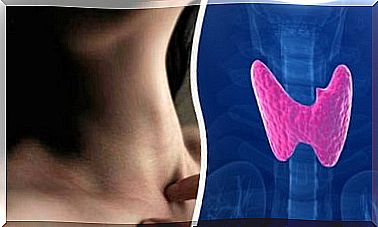What Is Uroflowmetry And What Does It Consist Of?
Uroflowmetry is a test that began to be used in the middle of the 20th century. It allows to calculate the speed of the urine flow over time. It is a simple procedure used to study the function of the bladder and its sphincter.
Doctors often refer to it as flowmetry . It also makes it possible to evaluate the amount of urine evacuated and its total volume. This is very useful to diagnose certain pathologies of the urinary system. In this article we explain what it is and how it is done.
What is uroflowmetry?
Uroflowmetry, as we mentioned in the introduction, is a test used to measure the amount of urine that is eliminated per unit of time. According to an article in the Cuban Journal of Urology, it is a simple, inexpensive and non-invasive technique.
To understand what this test is based on, it is important to understand how the urinary system works. Urine is stored in the bladder. For emptying to occur, a stimulus must exist. This is coordinated by the autonomic nervous system.
The voiding flow is not constant. That is, throughout the process of urinating the flow is usually stronger at first. In this way, a characteristic curve is produced in relation to the amount of urine that is expelled per second.
Uroflowmetry, therefore, expresses the volume of urine in milliliters or cubic centimeters per second. It also allows you to measure the total duration of urination, the capacity of the bladder and your muscle strength. This is explained by the Spanish Association of Urology.

Parameters that are measured in uroflowmetry
With this test, a series of very useful parameters are obtained to know the function and state of the urinary system. One of the values is the voiding volume. It refers to the total amount of urine that is evacuated.
You also get the peak flow and flow time. This way it is known how many seconds in total the patient is urinating and which is the highest peak. It is important to differentiate between flow time and urination time.
The urination time covers the entire period from when the patient begins to urinate until it ends. The main difference between the two is that the urination time is lengthened if the jet is interrupted at some point.
Finally, the voiding residue is evaluated. This value expresses the amount of urine that is retained in the bladder despite having urinated. All these parameters may be altered if there is any pathology, such as a urinary tract obstruction or nerve dysfunction.
When is it necessary?
Uroflowmetry is a low-cost and safe test. Therefore, it is one of the diagnostic pillars in urology. It can be used at any age, both in men and women.
Above all, it helps to check for obstruction in the normal flow of urine. In most cases it is performed to check for the following pathologies:
- Benign prostate hypertrophy – Also known as prostate hyperplasia . It is a very common condition, especially in men over 50 years of age. It consists in that the organ increases in size. This causes pressure on the urethra and the urinary flow to become blocked.
- Urinary incontinence: it is a situation in which the involuntary expulsion of urine occurs.
- Frequent urinary infections
- Stones in the urinary tract: they are usually associated with a blockage of the tract themselves. This blockage can also be due to scar tissue that forms after an injury, either in the urethra or in the ureters.
- Neurogenic bladder dysfunction: is a disorder of the nervous system. The impulses necessary for the bladder muscles to contract and relax properly are disturbed. It can happen, for example, in a spinal cord injury.
How is uroflowmetry performed?
Uroflowmetry is performed in a urology office. The approximate time of the test is thirty minutes, although it usually lasts less.
To perform it, the patient needs to urinate in a special device. It is a kind of funnel that is connected to a toilet that contains the measuring device. The normal thing is that it is in a closed and calm room.
Before starting to urinate, the person must press a button for the uroflowmeter to turn on. While urinating it is important that you do not strain yourself or move too much. Once the urination is completely finished, this button must be pressed again.
How to prepare for the test
Although uroflowmetry is a very simple test, it is important to consider certain aspects before performing it. Ideally, urinate a few hours before going to the exam. In addition, it is recommended to drink several glasses of water so that the bladder is filling up.
If not, it is possible that at the time of testing the patient is unable to urinate. However, you should not go with your bladder at maximum capacity. If so, the parameters could appear altered, since there would be a higher intravesical pressure.
On the other hand, it is essential that the consultation is well prepared. It should be an intimate and calm environment. Urination should happen naturally.
Meaning of uroflowmetry
Uroflowmetry results are obtained immediately. These vary based on age and gender. As the Urology Care Foundation explains , urine flow typically ranges from 10 to 21 milliliters per second. In the case of women it is between 15 and 18 milliliters.
If the flow is lower than these values, it may mean that there is an obstruction in the urethra or at the level of the bladder. It is also related to benign prostatic hyperplasia. If it is faster, it indicates the presence of urinary incontinence or muscle weakness in the bladder.
In addition, postvoid residual should also be measured. When it is greater than 20-30% of the volume that has been urinated, it can mean a problem on the roads.

Could there be any errors in the test?
Uroflowmetry, like any other test, can have errors. For example, it is recommended to repeat it if you cannot achieve a sufficient volume of urine. Ideally, it should be greater than 150 cubic centimeters. Similarly, if the bladder was at maximum capacity, it is also advised to repeat the test.
There are certain factors that can alter the results. As we explained before, making an effort to urinate or moving during the process are counterproductive situations. It is also important to rule out the consumption of drugs that interfere with the functioning of the urinary tract.
Uroflowmetry is a safe test
This test is one of the most used in urology, since it is a non-invasive and safe procedure. In addition, it has low cost and is simple to carry out. Uroflowmetry provides a lot of information about the state of the lower urinary tract.
It allows to know if there is any obstruction or any pathology that can alter urination. It is often combined with other tests to diagnose and treat. However, it should always be done in a comfortable, intimate and quiet environment.









